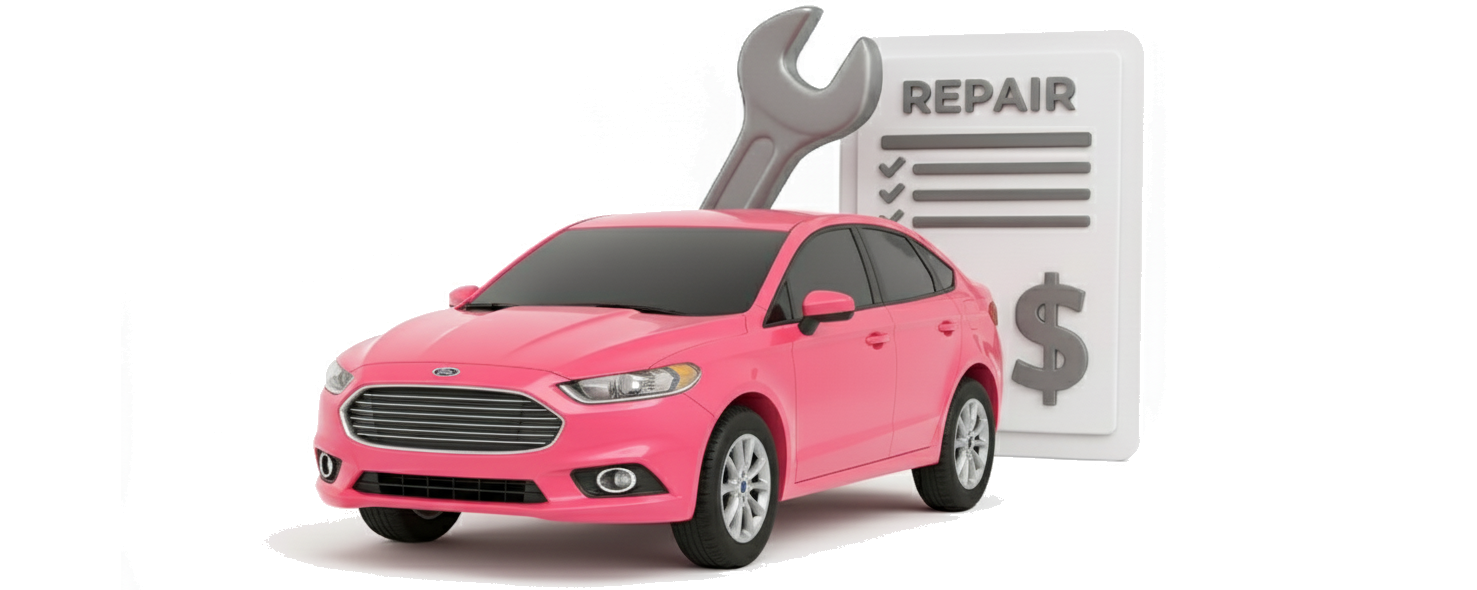Many tire retailers include free rotations for the life of the tire if purchased there, while at the dealership it may run $50–$90—especially for EVs, larger trucks or special wheel setups. Expect a 20–30 minute visit if no add-ons are needed.
Rotations are high-value maintenance: they even out tread wear, improve ride comfort and help extend tire life. Add-ons like balancing or alignment checks raise the bill but can be worthwhile if you’re chasing vibrations or uneven wear.
Download the Jerry app to keep your tire costs predictable and your maintenance simple.
Real customers Jerry has helped
Costs for getting your tires rotated depend on your exact vehicle, where you live and the quality of parts used. With Jerry, you can quickly see what drivers are paying right now. Below are real examples of customers we’ve helped secure top prices for when they need their tires rotated.
Estimates are modeled based on real vehicle and location data; names have been changed. Actual prices will vary by shop, parts, and vehicle condition.
Cost breakdown: Why the price varies
Rotations are mostly labor, so price is driven by time, vehicle specifics and shop rate. Here’s what moves the needle when comparing quotes in the Jerry app:
Drivetrain and tire pattern:
FWD, RWD and AWD use different rotation patterns. AWDs require closely-matched tread depths (often within 2/32″).
Wheel and tire type:
Large diameters, low-profile, run-flats, directional or staggered setups add handling time ($50–$90). Directional/staggered sets may be front-to-rear only or dismount/remount if crossing.
Add-on services:
Balancing: Add $15-$25 per wheel if vibrations are present.
Tire Pressure Monitoring System service/relearn: Often included, or $0-$30 if a special procedure is required.
Alignment check/adjust:
Quick checks $0–$40; full adjustments $90–$150+.
Shop type and labor rate:
Independents typically $25–$50; dealerships/premium tire centers $50–$90. Region and market matter.
Promotions and bundles:
Rotations may be free if included with tire purchase or prepaid maintenance.
Vehicle condition:
Corroded hubs, seized wheels, missing wheel-lock keys or damaged studs add time and labor. Pros should clean hub faces, use a light anti-seize on the hub center bore only (never on lug threads) and confirm hub-centric rings on aftermarket wheels.
What is a tire rotation?
A proper rotation should include a quick visual inspection, tread depth check, cold PSI set to placard, hub face cleaning, torque with wrench and a TPMS reset or relearn. A tire rotation repositions tires to even out wear. Some tips:
- FWD: Front wears faster under power.
- RWD: Rear wears faster under power.
- AWD: Benefit from equal tread depths all around to minimize driveline wear.
Common patterns:
- Forward cross (FWD): Fronts straight back; rears cross to front.
- Rearward cross (RWD/AWD): Rears forward; fronts cross to back.
- X-pattern: All four swap diagonally.
Exceptions:
- Directional tires: Front-to-back on the same side.
- Staggered setups: Often side-to-side only.
Special notes:
- Some AWD manufacturers (Subaru,Tesla) require strict rotation schedules to maintain drivetrain wear. These systems prefer tread depths within 2/32″ across all four.
- EVs are heavier and may need special lift points or “jack mode” for air suspensions, making precise torque critical.
Signs you need a tire rotation
You’re likely due if you notice:
- Uneven tread wear: Outer-front wear (FWD), or a choppy/“cupped” pattern.
- Vibration or shimmy: Steering wheel shake at highway speeds can be worsened by uneven wear.
- Noise changes: A humming or rhythmic “wub-wub” from feathering/cupping tread.
- Tread-depth mismatch: Example: if fronts are 5/32″ and rears are 8/32″, you’re adding wet-risk. AWDs should stay within ~2/32″.
- Mileage gap: If it’s been 6–8k miles, it’s time.
Your action plan: How to save money
Follow the tire rotation interval:
Set reminders in the Jerry app to make sure you’re rotating every 5,000–8,000 miles (often at oil change). EVs/performance cars benefit from the shorter end of that range.
Bundle smartly:
Pair with oil changes or inspections. Ask about coupons. Many retailers rotate free if you bought tires there.
Balance only when needed:
No vibration = skip.
Shimmy at 55–75 mph = add spin balance.
Persistent shake = request road-force balance.
Guard against upsells:
Nitrogen fills rarely justify the cost. Pay for alignments only if pulls or uneven wear are present.
Proper torque:
Request final torque with a wrench to OEM spec. Recheck after 50–100 miles.
Track tread depth:
Use a gauge—watch inner/center/outer. Catching uneven wear early prevents early replacement.
Mind the pressure:
Set cold PSI to the door placard; check monthly/before trips.
Ask for documentation:
Request tread depths by wheel position, torque spec and set PSI.
Book ahead:
Use the Jerry app to compare tire rotation cost near you and avoid overpaying.
Related repairs
Maintenance reminders in the Jerry app help remind customers that rotations are often paired with:
- Wheel balancing: Add if you feel vibration.
- Loose steering/suspension components: Worn ball joints, tie rod ends or bushings show up as play when the wheels are lifted.
- Tire repair: Nails or leaks found during inspection can be patched.
- TPMS service: Weak sensor batteries or position relearn may be needed; many shops include basic resets.
- Brake and suspension inspection: With wheels off, techs can note pad thickness (mm), rotor condition (lip/heat spots), shock/strut leaks and torn CV or ball-joint boots—useful for planning repairs.
DIY vs. Pro: Can I do this myself?
If you have the right tools and a safe workspace, rotating at home is doable. Key points: safety, correct lift points and proper torque.
DIY tips: Mark wheel positions, confirm the correct pattern, never lube lug threads, finish with a torque-wrench final tighten and then re-torque after a short drive.
Rotations may not feel urgent, but skipping them is like throwing money away.

Download the Jerry app to get accurate quotes near you in minutes and stay on top of tire-rotation reminders without the phone tag.
What our customers are asking
-
How often should I rotate my tires?
-
Do I need an alignment with every rotation?
-
Should I balance the tires every time?
-
Can I rotate directional or staggered tires?
-
Are rotations required for tire warranties?
-
Why do EV rotations sometimes cost more?
-
Do lug nuts need re-torque?
-
What if I don’t know my car’s rotation interval?

Jerel Lawrence is an experienced and certified automotive technician with a strong foundation in diagnostics, repair and technical mentorship. A graduate of NASCAR Technical Institute in 2010, Jerel began his career at national automotive repair chain locations, where he earned eight certifications from the National Institute for Automotive Service Excellence (ASE).
From 2017 to 2022, he worked as a General Motors-certified technician at a Cadillac dealership, refining his skills in manufacturer-specific diagnostics and service procedures. Today, Jerel leads as the senior technician and mentor at a family-owned repair facility, where he helps guide the next generation of technicians while ensuring top-quality service.
In addition to hands-on work, Jerel contributes to the automotive community through writing detailed articles and answering technical questions to help vehicle owners better understand and care for their cars.

Everett Cook is an award-winning journalist and editor with more than 10 years of experience across a variety of industries. In editing for Jerry, Everett’s mission is to help readers have a better understanding of the costs of owning or leasing a car and to better understand their vehicle in terms of insurance and repairs. Prior to joining Jerry, Everett was an editor for Axios. His previous work has been featured in The New York Times, The Los Angeles Times, The San Francisco Chronicle, The Atlantic, Atlantic Re:think, The Boston Globe, USA Today, and others. He’s also been a freelance writer and editor with experience in SEO, audience building, and long-term content roadmaps. Everett is a proud graduate of the University of Michigan.









